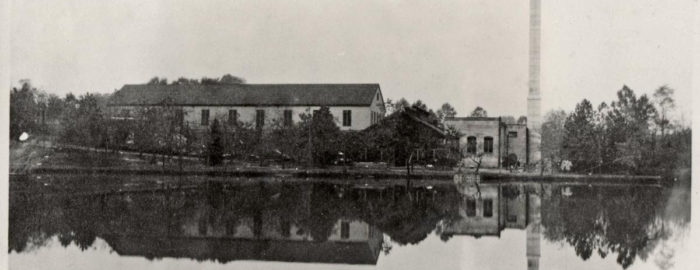If you don’t live in Chevy Chase, Maryland, it’s easy to assume that “Chevy Chase Lake” is, in fact, a body of water in the beautiful Montgomery County suburb. But those of us who live here know that Chevy Chase Lake is now simply the name of a residential neighborhood near the intersection of Jones Bridge Road and Connecticut Avenue. Chevy Chase lake did exist, but it was drained more than 70 years ago. But from 1894-1937, the man-made lake was a DC Metro destination for dancing, concerts, and picnics.
The lake was created in 1892. The small tributary, Coquelin Run, which flows to Rock Creek was damned to create a source of water for the electric generating plant responsible for powering the streetcars on Connecticut Avenue and future Chevy Chase homes.
This is where it gets interesting. In 1894, the Chevy Chase Land Company saw opportunity in the lake as a way to promote land sales of the new suburb. It was through this idea that an amusement park surrounding Chevy Chase Lake was born.
Adults and children could enjoy boating, bowling, a shooting gallery, boat swings, a merry-go-round, and pony rides. Concerts and dancing were a regular occurrence, not to mention tightrope walkers, gymnasts, and contortionists. What did it cost for all of this entertainment? Nothing. Only streetcar fare.
Though the streetcar line closed in 1935, the amusement park continued to operate until 1937. The lake was eventually drained and today appears as steep terrain, dense vegetation, and a condominium development, but it still goes by the name Chevy Chase Lake.
We would be remiss if we didn’t mention that this amusement park was for whites only. A letter to the editor in The Washington Post tells the story of an African American couple turned away from Chevy Chase Lake by guards in 1898. There were no signs for this segregation; it was just understood and quickly discovered by any people of color that tried to enter the park.
The time period of Chevy Chase Lake (the early 20th century) reflects a huge shift in modern American society and culture. While African Americans were being turned away at the entrance, some of the most popular performers at Chevy Chase Lake were black musicians, dancers, and singers. Chevy Chase Lake was also the location for debates about sexuality and gender.
Though we have come a long way since the days of segregation, we still have a long way to go. In light of recent racially charged events, Washington, D.C.’s National Museum of African American History & Culture launched Talking About Race, a web portal intended to provide free educational resources and tools from scholars, activists, historians, and more. The ultimate goal? Teach everyone how to have conversations about race and racism.










